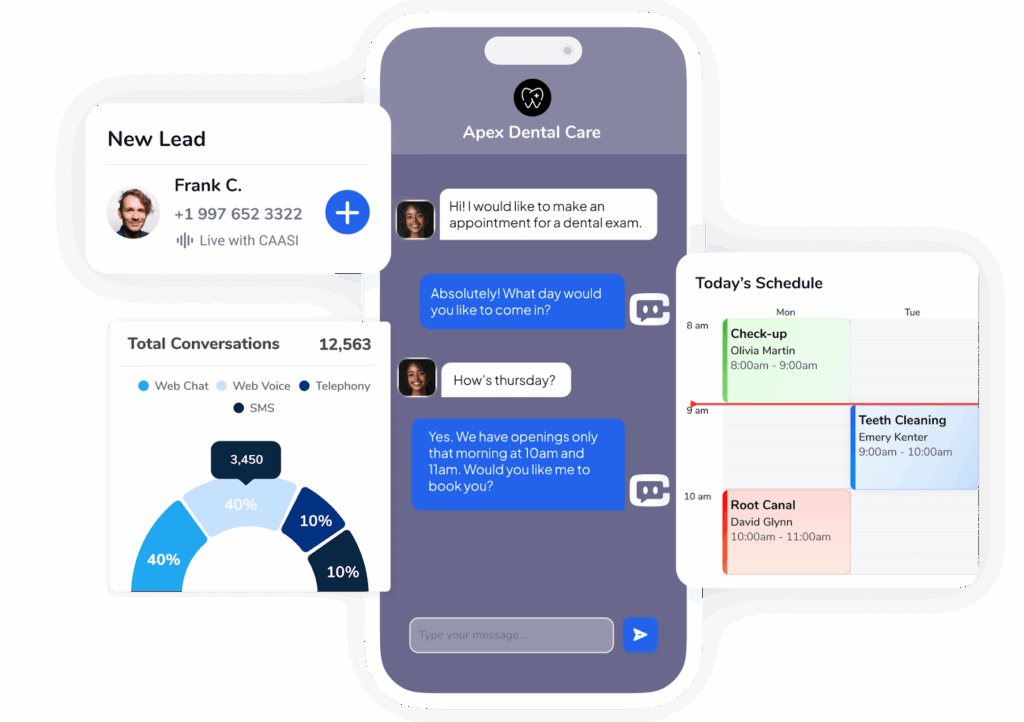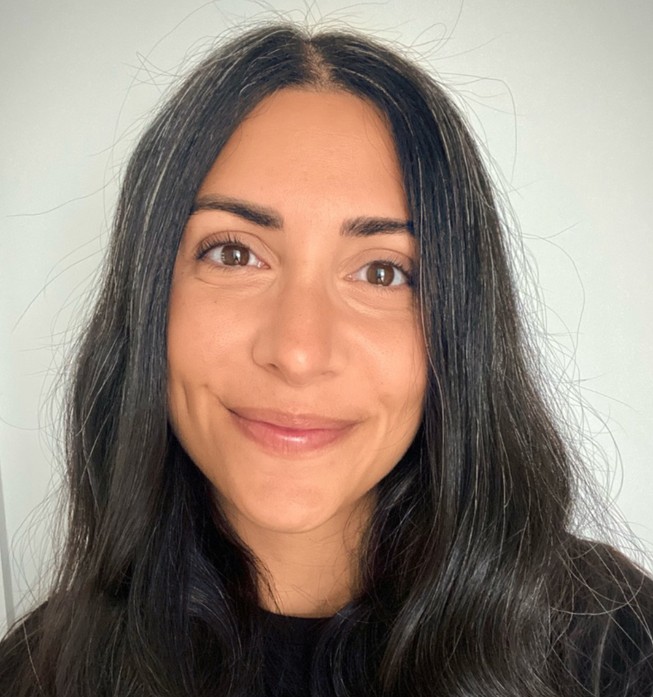Virtual Dental Receptionist: Human vs. AI vs. Hybrid

Last Updated on 13 November, 2025
Virtual receptionists have become essential for dental and wellness businesses that can’t afford to miss a single call. But with so many options, human, hybrid, and AI, it’s tough to know which delivers the best results.
This virtual receptionist comparison breaks down how leading providers stack up and explains why an AI receptionist like WellnessLiving CAASI is quickly becoming the best virtual receptionist choice for growing practices.
In this post, we’ll compare pricing, performance, and real-world usability to help you choose the right system for your dental office.
Key takeaways: Virtual receptionist models
- AI receptionists are redefining front-desk operations. With 24/7 coverage, automation, and HIPAA/SOC 2 compliance, tools like WellnessLiving’s CAASI now outperform human and hybrid options.
- Human and hybrid models have strengths but higher costs. They offer warmth and empathy but struggle with scalability, consistency, and after-hours coverage.
- Pricing and predictability matter. AI tools use flat monthly rates vs costly per-minute models.
- The future is AI-first. The healthcare virtual assistant market is projected to grow 12x by 2032, signaling automation’s rise.
How to compare virtual receptionist services
When you’re vetting virtual receptionist options, use a consistent criteria set. For dental offices, key variables include:
- Price tier: From budget $ to premium $$$
- Technology: Pure human staff vs hybrid vs AI-first
- Automation & integrations: E.g., scheduling, CRM, lead capture
- Compliance: HIPAA, SOC 2, and security musts
- Scalability: Flat rate vs per-minute billing
Common challenges with human and hybrid receptionists
Human and hybrid models offer definite advantages (human warmth, personalized interaction), but they come with real limitations, especially for dental and wellness practices.
- Cost tends to be high. For example, Ruby’s per-minute model can double the cost if call duration or volume increases.
- Overages and unpredictable pricing: When staff are busy, you may get billed extra minutes or surcharges.
- Scalability is limited: You may need more agents as call volume grows, meaning more overhead.
- Inconsistent service: One user review of Ruby reported “67 duplicate calls … billed despite providing documentation”. ConsumerAffairs
- Limited operational times: For a dental office, missing an incoming whitening or emergency call might mean losing a new patient, and human-only models don’t always guarantee true 24/7 responsiveness.
Why dental and wellness practices choose AI
In a dental office, every missed call could mean a missed patient. That’s why more practices are turning to AI receptionists.
They offer 24/7 availability, so new leads are captured even on weekends, evenings, or during lunch hours. With compliance built in, WellnessLiving’s dental software supports HIPAA, SOC 2, and two-way encryption, making it fully secure for healthcare environments.

WellnessLiving’s dental software – CAASI
AI also handles reminders, follow-ups, and bookings automatically, reducing no-shows and lightening your team’s workload. And unlike per-minute or per-call models, AI plans use flat monthly pricing, giving you predictable costs that scale with your growth.
Virtual receptionist pricing comparison
Here’s a comparison summary of different virtual receptionists:
| Provider | Call Resolution | Monthly Cost | Notes |
|---|---|---|---|
| WellnessLiving CAASI | 98% | ~$49/month (Chat plan); ~$199/month (Phone Agent) | AI-driven, healthcare-trained, HIPAA & SOC 2 compliant |
| Ruby Receptionists | 82% | ~$385/month for 100 minutes; higher tiers much higher | High cost, human staff |
| Smith.ai | 89% | ~$292.50/month for 30 calls (live-agent plan) | Hybrid model, inconsistent |
For a closer look at how pricing models compare, see this article on Virtual Receptionist Pricing.
How AI receptionists improve patient experience
An AI receptionist not only saves time, it also improves patient experience. In dental and wellness settings, every missed call or long hold time can mean a lost client.
An affordable virtual receptionist like CAASI gives you instant, consistent communication that feels personal, not robotic.
- No hold times: Patients get immediate answers through automated voice and chat, building trust from the first interaction.
- Consistent communication: Every script follows the same professional, compliant tone (no “off days).”
- Automated reminders and follow-ups: Reduce no-shows while keeping patients engaged between visits.
- Personalized AI responses: The system adapts to your clinic’s tone and services, proving that the real AI receptionist benefits go beyond efficiency.
- 24/7 receptionist service: Whether someone calls at midnight or during lunch hour, they always reach your practice.
The future of virtual receptionist technology
AI receptionists are becoming the new standard for front-desk operations. The future of AI receptionist systems focuses on converting leads, handling follow-ups, and managing complex requests with precision.
According to this 2025 market forecast for the healthcare virtual assistants industry, the market for AI-driven healthcare assistants is expected to grow from $1.03 billion in 2023 to nearly $13 billion by 2032, a clear signal that automation is reshaping patient communication.
Modern solutions now offer omnichannel coverage, bringing phone, chat, SMS, and social messaging into one AI front desk. Platforms like WellnessLiving’s CAASI are leading this shift toward smarter, compliant, and more efficient patient engagement.

WellnessLiving’s dental software – CAASI
Why WellnessLiving AI front desk sets the benchmark
If you’re comparing virtual receptionist options in 2025, focus on what truly matters: predictable costs, scalability, and reliable compliance. The AI front desk era has officially arrived.
WellnessLiving’s CAASI stands out for dental offices because it integrates directly with your practice management workflow, maintains strict healthcare compliance, and offers a simple flat monthly rate.
Ready to see it in action? Book a demo to discover how CAASI can transform your front desk experience.
FAQs about virtual dental assistants
Some do, some don’t. Request a current SOC 2 Type II report, a signed BAA for PHI, and details on data retention, encryption, and access controls.
Yes, via native platform hooks or APIs. Look for two-way sync, timezone awareness, buffer rules, and audit logs to prevent double-booking.
Common extras include: overage minutes/calls, after-hours or holiday surcharges, transfer/patch fees, outbound calls, bilingual support, premium integrations, and custom scripting.
It scales instantly, operates 24/7, integrates deeply with business data, supports multilingual experiences, and gets cheaper per interaction, while hybrids keep humans for edge cases.






